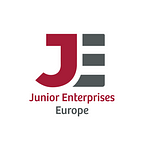Gender equality in Europe: where are we?
Equality is about allowing men and women to have equal rights and opportunities regardless of their gender. History has always shown us a male-dominated world where every small, large, hard-earned achievement by women has been regarded as less significant. Progress is advancing and there is the need to finally eliminate this disparity.
Since 2010, the European Institute for Gender Equality (EIGE) aims to strengthen and promote gender equality throughout the EU. In its decade of operation, EIGE conducted research and collects data to develop and fund projects that circumvent those inequalities. EIGE’s work is based on a numerical score from 1 to 100 that is assigned to each EU country: the max score indicates full gender equality achieved between men and women.
Europe in numbers.
According to EIGE, in 2021, the European Union reached a total score of 68 points. The most virtuous Member States were Sweden, Denmark and the Netherlands with 83.9, 77.8, 75.9 points respectively. The least upstanding states were Greece, Hungary and Romania (52.5, 53.4, 54.5 respectively). Each EU country is assessed by the indicators such as power, work, economy, time, health, and knowledge. Intersecting inequalities and violence are also examined but there are not accounted for in the final score.
The Covid-19 Pandemic has enlarged the gender gap. The female employment rate for women aged 15–64 averaged 62.4%, while the male employment rate was about 73%. Women are also more likely to fall back on part-time work with a percentage of 31% compared to 9% for men, due to child care. Unemployment figures are even more alarming. Greece, Spain and Italy rank among the worse for their female unemployment rate compared to other EU countries.
For women, it is more difficult to hold managerial positions. Only a third of managers in Europe are women, with significant differences between country and country. Not only that, according to Eurostat, women earn 16% less than men for the same training and duties. On average, this gap occurs in all Member countries, although it varies from country to country: for example, Estonia and the Czech Republic show greater differences than Italy, Luxembourg and Poland.
A single indicator would not break down these data in a totally correct manner, since these differences depend substantially on national characteristics (as reported by Eurostat), determined by cultural and social, legal and economic contexts.
But why are they not just numbers?
Still today, women continue to be excluded by certain political, managerial or other positions. Some countries, including Italy, have had to impose formulas of inclusion towards women such as “pink quotas” that often risk, however, to be a facade called inclusiveness that hides the gender gap instead of solving it.
Well, in 2022 the time has come for every woman to be equal to every man without any gender discrimination. The time has come for human value and meritocracy to go beyond this label.
JE Europe aims to be the standard-bearer of equality between men and women in the field of European associative. It involves every single Junior Enterprise in an active, dynamic, and decisive way so that the line that differentiates female members from male members is as invisible as possible. The primary objective is to believe that the difference between genders does not define skills, ambitions and the certainty of being able to reach the top. JE Europe will always be on the side of equality. Step by step, after every single application, every single project, every single event.
